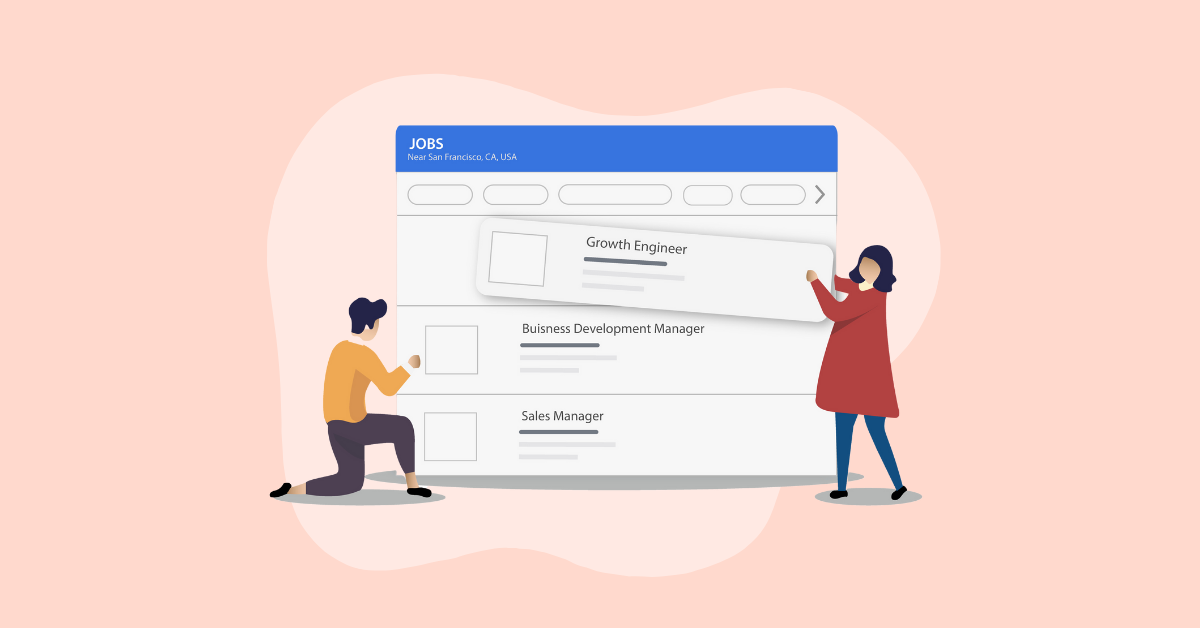
Introduction to Employee Evaluation
Employee evaluation is an essential exercise conducted by employers/managers. It’s carried on to review employee performance, set future goals, celebrate accomplishments, and discuss the company’s growth opportunities.
In this article, you will find out what employee evaluation is, how it is written & conducted, example questions, and much more. Read till the end to get complete knowledge on employee evaluations.
What is an Employee Evaluation?
Employee evaluation essentially takes place to assess employees’ job performance. It includes information regarding employee performance, ability to meet goals on time, expectations that are met, exceeded, or failed to meet, and feedback on where the employee can make improvements.
Most Commonly Used Employee Evaluations Methods/Top Forms of Employee Evaluations:
- Management by Objectives (MBO)
- Behaviourally Anchored Rating Scale (BARS)
- Annual/Quarterly Reviews
- Employee Self-Evaluations
- Assessment Center Method
- Behavioral Checklist
- 360-Degree Reviews
- Performance Test
- Peer Reviews
How frequently Employee Evaluations are done?
Earlier classic employee evaluations used to happen annually but this has now changed and becomes more frequent and informal in nature. The reason is simple, it’s hard for employees and employers to keep in track of/keep in mind exactly what happened throughout the year. Some studies also suggest yearly evaluations don’t add much value in improving employee efficiency/performance.
Evaluation of employees can be exercised quarterly, monthly, or weekly as per needs and situations. Today companies are putting extra effort into the betterment of employee performance by giving them feedback more frequently. Additionally, some companies are taking it to the next level by opting for frequent check-ins and one-on-one meetings instead of standard employee evaluations.
Importance of conducting Employee Evaluations
Employee evaluations are important to practice which is beneficial for both employer and the employees. These help plan clear-cut goals for the whole year, how results will appear to be, and how it is to be achieved.
Employers can track how their employees are progressing toward their goals. Information gathered with performance evaluations will help the administration to take decisions on promotions, compensation terminations, etc.
Work evaluations also open the door for sincere communication of feedback to employees. And feedback certainly contributes to making their performance better.
Benefits of Evaluation of Employees
Employee evaluations or employee performance appraisals do have some of the major benefits listed below:
- Performance reviews allow employers and employees to build clear expectations between them.
- These help in improving employees’ job satisfaction and reducing turnover.
- Setting up goals and success benchmarks/metrics becomes effortless with performance evaluations.
- With evaluations recognizing the top performers and deserving employees for promotion becomes easy.
- Employee evaluations let managers understand employees’ individual needs, areas they excel, their goals, and what motivates them the most.
- These also hugely improve workplace performance and its environment, along with business profitability.
- Through appraisals, managers can share direct feedback with employees on their work performance and how they can improve it.
- These help employees plan growth paths for the future and share their preferences of the way they want to be managed.
Prime Elements of Employee Evaluation
You can understand the importance of conducting employee performance evaluations with the following points:
1. Regular schedule for performance reviews
No matter which type of employee evaluation you go for i.e., yearly, quarterly, monthly, or even weekly, you must schedule it consistently. If there’s a schedule for performance reviews, your employees will keep in mind it’s arriving and they’ll be ready for it.
Employee evaluation is an essential tool which helps define the goals to work for and line up their task on priority for achieving those.
2. Clear standards & structure for measuring performance
To yield consistent results, establishing standards and structure for the review process is important. It should be flexible in terms of expectations based on the rank/seniority and post of the employee in question.
A standardized evaluation structure garners consistent results and assures fairness in the evaluation process, no matter who is in charge of evaluating employees.
3. Performance evaluations should be goal-centered
Every employee at your workplace should have goals relevant to measure their performance. These goals essentially must work as a yardstick which helps to measure the particular employee’s work performance. Remember that these must be SMART goals. It means that goals must be Specific, Measurable, Actionable, Relevant, and Timely.
When you’re setting up goals for your employees, be involved with them in figuring out their strengths, driving forces, and responsibilities.
After setting them up, these goals must be taken into consideration once you start employee evaluations. Also, you must talk about the progress they’re making.
4. Enables two-way communication
Two-way communication is an essential element of the performance review. If your evaluation process lacks it then you won’t be able to get the most out of it. The main reason behind conducting performance reviews is to help your employees to enhance their productivity.
So when you give suggestions to them, give them a chance to speak also. Ask them what they need to do their job more properly, and what are their opinions about their own work. Also, take feedback on what they think of you as their leader and how they like to be managed. Don’t just listen but also take action on their suggestions, this way they’ll know they’re being heard in the company.
And when you’re talking, motivate them and encourage them to be strong-minded. You should tell them their strengths and acknowledge their weakness along with giving solutions for them. Do it right and you’ll see a huge improvement in them soon.
How to Write an Employee Evaluation?
You need to follow the following steps to write an employee evaluation that works:
Step 1: Analyze the resumes of every employee
Get your employee’s latest job descriptions and study them thoroughly. Job descriptions will give you an idea of your employee’s job duties and responsibilities.
Analyze and make notes on their tasks on JDs and measure their performance. Write down areas where their performance is good and the areas they need improvement. The measuring standards may vary from person to person.
Step 2: Throw light on employee’s scope of improvement
With your list ready, it’s time to think about the time your employee failed to accomplish tasks or faced difficulty in completion. Look at past performance reviews and point out the areas that needed improvement back then. Take note of these so you can figure out/see if the employee worked on past feedback or not. Write the aspects where they still require efforts for betterment.
Don’t go only for downsides but focus on the positive aspects too. See where your employees have shown advancement or have done their tasks exceptionally well. Write about your employee’s new skills learned, accomplished training sessions, or acquired/earned certificates. Try to maintain a balance between positives & negatives while preparing the appraisals.
Step 3: Compare positives and negatives
Now, be ready with each employee’s previous performance evaluations and JDs to make a list of their strengths and weaknesses. Here, the SWOT method can be quite helpful for you.
Consider making notes on strengths first which includes accomplishments and areas where your employee has shown substantial growth. Next, move ahead to weaknesses. These include all the reasons that stopped them to reach their end goals. Write the opportunities for their advancement in work performance. Then finally, the threats which encircle their behavior or any other thing that might hurt their performance.
You need to collect the data to back up your findings. So collect data from the reports/records that reveal their sales numbers and attendance. This is because it shows how much the employee is contributing to the company’s growth.
Step 4: Provide goals to employees
The end goal for employee evaluations is to give them the power to improve their performance and career growth.
The recommended goals must relate to their strengths and weaknesses. Don’t only focus on goals based on weakness but also include strengths-based goals. Since it will refine their strengths and help them outperform themselves.
Step 5: Offer constructive & actionable feedback
Use your documentation to offer constructive feedback to your employees. Your report should deliver constructive feedback and make them feel good about the progress they’ve made.
Additionally, covering the point of weakness you can’t skip. Introduce them to the areas they aren’t performing well and tell them the ways to make improvements for it. Keep your feedback purely objective and straight away actionable.
Step 6: Accept feedback from your employees
Giving them an opportunity to speak on their work evaluation report is essential. This will let them feel valued, heard and give them a notion that their opinions are important in your company. It’s beneficial to make them more engaged in their work and reach their goals in a more efficient way.
How to perform Employee Evaluation?
You can conduct employee evaluations traditionally where you need to hold one-on-one meetings with each employee yearly in your office. Otherwise, in these modern times, it is more feasible to adopt more regular performance evaluations. It is because these will improve the process itself and certainly the results.
Also, frequent reviews will make it easier for you to attain performance management goals with quick informal conversations. You will get recent progress which will be helpful for the betterment of their own performance but also for the company’s business. You can solve all of the issues within a short span of time. Along with that, you’ll be able to give recognition and reward the employees for their current achievements then and there.
Some useful tips for conducting Employee Evaluations
It’s crucial to know the way to hold evaluation meetings for you as a manager or a leader. You need to be communicative aptly with every member of your team and work together for their and your company’s aim.
Hold the meetings with your team members and remember the following points when doing the same:
- Take notes of everything, even the smallest thing you notice. Small details usually make a big difference so don’t miss anything.
- You need to be ultra-specific and direct when delivering feedback. It will let them take steps towards betterment immediately.
- Establish a strong and positive relationship with your employees. Allow open and friendly regular talks as it paves the way to exchange honest feedback.
- Want to compare your employees? Not a great idea, avoid it. Every employee is different and comparing them on the same scale isn’t fair. Try to measure progress with the desired goals you and the employee agreed upon.
- Ask certain questions. Meaning, that a question you ask has a motive behind it. So make a list of the right questions that leads in the right direction. These questions should uncover the talk to know about their own and team’s progress. In the end, if you get insights for managers on how they can improve then it’s a plus.
Sample Questions for Performance Review
Here are some questions you can start asking your employees relevant questions that have a purpose:
Questions related to performance:
These questions will motivate your employees to consider their performance and plan for the future. These questions are great conversation starters you can begin the talk. You can also couple these with your recommendations.
- What was your best achievement on the job this year?
- Do you think you reached your goals for this evaluation phase?
- What were the biggest hurdles you’ve faced and how can I help you with them?
- What do you wish to attain in the organization this year?
Questions related to growth:
These questions will support you in creating a plan for the future of your employee. With these questions, you’ll be able to demonstrate to employees that your company cares for them.
- What do you need to reach your goals?
- Which are your career goals for the long term?
- How can we help you accomplish your career growth?
- Which position would you like to proceed to in the company?
- Which areas do you feel you have scope for improvement?
Questions related to management
In the end, you really need to give a chance to hear feedback from your employees. So following questions will allow you to do that:
- Is the performance evaluation beneficial for you? How would you like to get feedback?
- Would you suggest how can I manage you better?
- Do you have everything at your disposal to do your work?
- Can you tell when the company helped or obstruct your performance?
Conclusion
To conclude, the motive for conducting employee evaluations is to identify reasons that limit employee performance. These will only help you and your employees be on the same page. It lets you keep your actions coordinated with employees so both can work together to reach the shared goals. It helps both the employees and the company grow together exponentially. You can check out some employee evaluation examples here.






